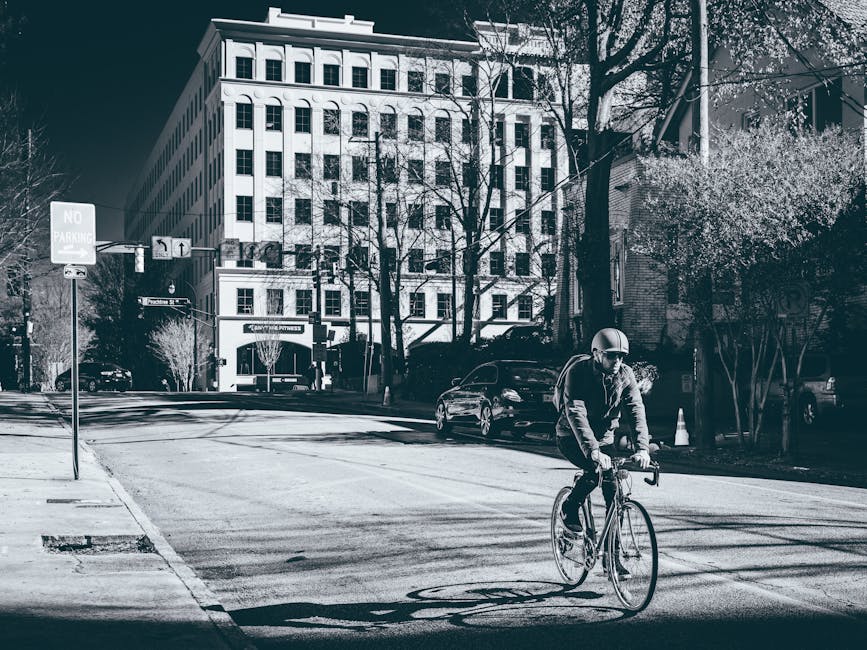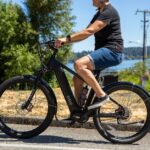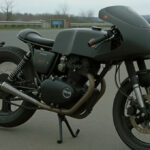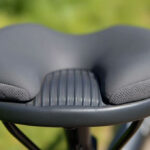Finding the best bike seat for men involves a balance of comfort, performance, and an understanding of anatomy. Here’s a quick guide to get you the right seat without having to dig too deep:
- Comfort: Look for seats with plenty of padding or gel covers designed for long rides.
- Performance: Seats with an anatomic relief zone help reduce pressure on sensitive areas, improving comfort and endurance.
- Anatomy: Choosing a seat that matches your own body mechanics ensures a better fit and a more enjoyable ride.
In the cycling world, the right saddle can mean the difference between enjoyment and discomfort. A seat that doesn’t cater to your comfort can leave you sore, impacting your ride performance. Men’s bike seats often feature design improvements, such as anatomic relief zones, to support key areas like the prostate, improving blood flow and comfort. Selecting the right seat is essential for those who want to protect sensitive areas and maximize efficiency both on the trail and in commuter settings.

Simple guide to best bike seat for men:
Understanding Bike Seat Comfort
When it comes to bike seats, comfort is king. A comfortable saddle can make or break your cycling experience. But what exactly makes a bike seat comfortable? Let’s break it down.
Sit Bones
Your sit bones, also known as ischial tuberosities, are the bony parts of your pelvis that support your weight when sitting. A good bike seat should support your sit bones without causing pressure or pain.
To find the right seat, measure the distance between your sit bones. Saddles come in different widths, so knowing this measurement helps in choosing one that fits you perfectly. A seat that’s too narrow can cause discomfort as it doesn’t support your sit bones properly. On the other hand, a seat that’s too wide might lead to chafing.
Pressure Relief
Pressure relief is crucial for a comfortable ride. Many men’s bike seats are designed with anatomic relief zones. These zones help reduce pressure on sensitive areas, like the prostate, by providing a cutout or channel in the saddle.
For instance, the Selle Royal Respiro Athletic is known for its excellent pressure relief and airflow, making it a top choice for many riders.

Saddle Width
The right saddle width is not just about supporting your sit bones. It also affects how you distribute your weight across the seat. A well-fitted saddle will keep you stable and prevent unnecessary movement, which can lead to discomfort or even injury over time.
Short-nosed saddles, like the Prologo Dimension Tirox, are gaining popularity. They allow for more forward movement without compromising power or comfort. These saddles are also wider at the front, providing better support for various riding positions.
In summary, understanding your anatomy and how it interacts with your bike seat is key. Choose a saddle that supports your sit bones, offers pressure relief, and has the right width for your needs. This will ensure a comfortable, enjoyable ride every time.
Best Bike Seat for Men: Top Picks
Choosing the best bike seat for men can transform your cycling experience by enhancing comfort and performance. Here are our top picks that cater to different needs and preferences.
Selle Royal Respiro Athletic
The Selle Royal Respiro Athletic is designed for riders who prioritize pressure relief and airflow. It features a center groove that reduces pressure on sensitive areas, making it ideal for shorter rides in an upright position. The groove also promotes airflow, keeping you cool and comfortable. With strong and lightweight Titanox rails, this saddle offers a padded, cutaway design suitable for both men and women.
Prologo Dimension Tirox
The Prologo Dimension Tirox is perfect for those who prefer a short-nosed saddle. At just 245 millimeters long, it reduces pressure while offering a wider front for better support. The cutout shell, known as the Perineal Area System (PAS), provides exceptional pressure relief. This saddle’s dual-density padding and microfiber cover ensure comfort across various riding styles, making it suitable for both road racers and commuters.
Planet Bike A.R.S. Classic
For an affordable option, the Planet Bike A.R.S. Classic is a standout. With firm foam padding and a pronounced relief channel, it delivers comfort without breaking the bank. The abrasion-resistant cover ensures durability, and its versatile shape allows for movement, making it a great choice for budget-conscious riders looking for an upgrade.
WTB Speed Steel
The WTB Speed Steel is a budget-friendly saddle designed for off-road enthusiasts. Its steel rails dampen vibrations for a smoother ride, while a slight center depression redistributes pressure from soft tissue to sit bones. This saddle is ideal for gravel grinding and singletrack shredding, offering support both on and off the trails.
Selle Italia Model X Green Superflow
The Selle Italia Model X Green Superflow offers incredible value and comfort at a surprisingly low price point. With a short nose, 145-millimeter width, and generous relief cutout, it provides immediate comfort. The minimal padding and flexible shell make it a reliable choice for longer road rides. The only downside is its weight, but it’s a small trade-off for the comfort and quality it offers.

These top picks cater to various preferences and budgets, ensuring every rider can find a seat that fits their needs. Whether you prioritize pressure relief, airflow, or affordability, there’s a saddle here that will improve your cycling experience.
Choosing the Right Bike Seat
Selecting the right bike seat is crucial for comfort and performance. It involves considering your anatomy, riding style, and padding preferences.
Anatomy
Understanding your anatomy is key. Men and women have different pelvic structures, which affects how weight is distributed on a bike seat. Men often need a longer and narrower saddle to accommodate their sit bones and relieve pressure on the groin area. Features like an anatomic relief zone can help alleviate discomfort and improve blood flow.
Riding Style
Your riding style greatly influences the type of seat you need. For road cycling, a more aggressive, forward-leaning position is common, so a narrower, streamlined saddle is ideal. This design allows for efficient pedaling and reduces friction. In mountain biking, a moderately aggressive position benefits from a saddle with a slightly cradled shape for stability and support over rough terrain.
For comfort or recreational riding, a wider seat with more padding is suitable. This supports a more upright posture and provides cushioning for leisurely rides. These seats are usually heavier but prioritize comfort over performance.
Padding Preferences
Padding affects comfort significantly. Seats with gel or foam padding can offer different benefits. Gel padding conforms to your body, providing immediate comfort, while foam cushioning offers firmer support and retains its shape longer.
For long-distance rides, minimal padding might be better to prevent discomfort from prolonged pressure. However, for short, casual rides, more padding might be more comfortable.
Choosing the right bike seat means finding a balance between these factors to suit your personal needs and riding habits.
Next, we’ll address some common questions about bike seats to further guide your decision-making process.
Frequently Asked Questions about Bike Seats
What bicycle seat is most comfortable?
When it comes to comfort, the Wittkop 5-zone bike seat stands out. It’s designed to keep your sit bones happy, even on long rides. This seat has five distinct zones that provide targeted support and cushioning, making it a top choice for those seeking comfort on various bike types, from cruisers to commuters.
Another excellent option is the Selle Royal Respiro Athletic saddle. This seat is built with pressure relief in mind, featuring a ventilation channel that helps keep you cool and comfortable during your ride. Its design reduces pressure on sensitive areas, making it a favorite for those who prioritize comfort.
Is gel or memory foam better for a bike seat?
Choosing between gel and memory foam depends on what you value more: immediate comfort or long-term support.
Gel padding offers a cushy feel that conforms to your body shape, providing instant comfort. It’s perfect for short, leisurely rides where you might want a softer seat. However, gel can sometimes compress over time, reducing its effectiveness on longer rides.
Foam cushioning, on the other hand, provides firmer support and maintains its shape longer. It’s ideal for those who ride frequently or cover long distances, as it offers consistent support and helps prevent discomfort from prolonged pressure.
How should a man sit on a bike?
Proper sitting posture is crucial for a comfortable ride. Men should aim for a neutral spine position to avoid strain. This means your back should be straight but relaxed, not hunched over. Your arms should be slightly bent, allowing for flexibility as you ride.
Ensure that the bike seat is at the right height. When sitting, your feet should comfortably reach the pedals, with a slight bend in the knee at the bottom of the pedal stroke. This helps maintain a relaxed back and reduces pressure on the groin area.
Adjusting the seat angle can also make a big difference. The seat should be level or slightly tilted forward to promote a natural pelvic position. This setup can improve blood flow and reduce pressure, enhancing overall comfort and performance.
Next, we’ll conclude with some final thoughts on how to ensure your rides are both comfortable and enjoyable with the right bike seat.
Conclusion
Choosing the right bike seat can significantly impact your cycling experience, enhancing both comfort and performance. At Doot Scoot, we understand the importance of finding a best bike seat for men that not only fits your anatomy but also suits your riding style. The right seat can make your rides more enjoyable, whether you’re commuting through the city or tackling challenging trails.
Our focus at Doot Scoot is on providing expert advice and resources to help you make informed decisions. We believe that a well-chosen bike seat can transform your cycling experience, reducing discomfort and improving your efficiency on the bike.
By prioritizing comfort, you’ll find yourself wanting to ride more often and for longer distances. A comfortable seat means less pressure on sensitive areas, better blood flow, and ultimately, a more enjoyable ride. Performance isn’t just about speed; it’s also about how you feel during and after your rides. A well-fitted seat can help you maintain a relaxed posture, reducing fatigue and allowing you to focus on the joy of cycling.
We invite you to explore our resources and guides to find the perfect bike seat for your needs. For more information on how we can help you improve your cycling experience, visit Doot Scoot and find how our expertise can support your journey to more comfortable and efficient rides.










